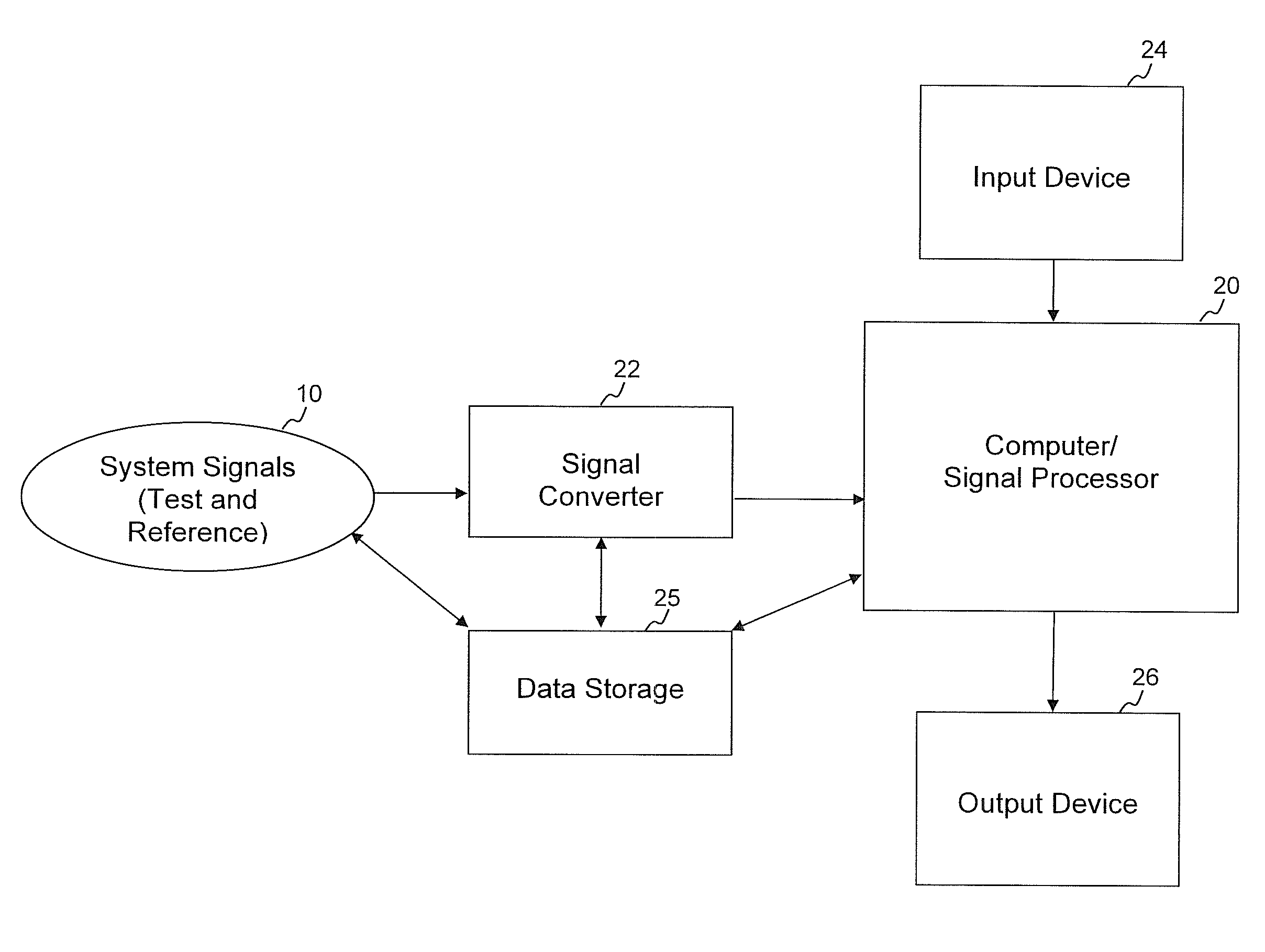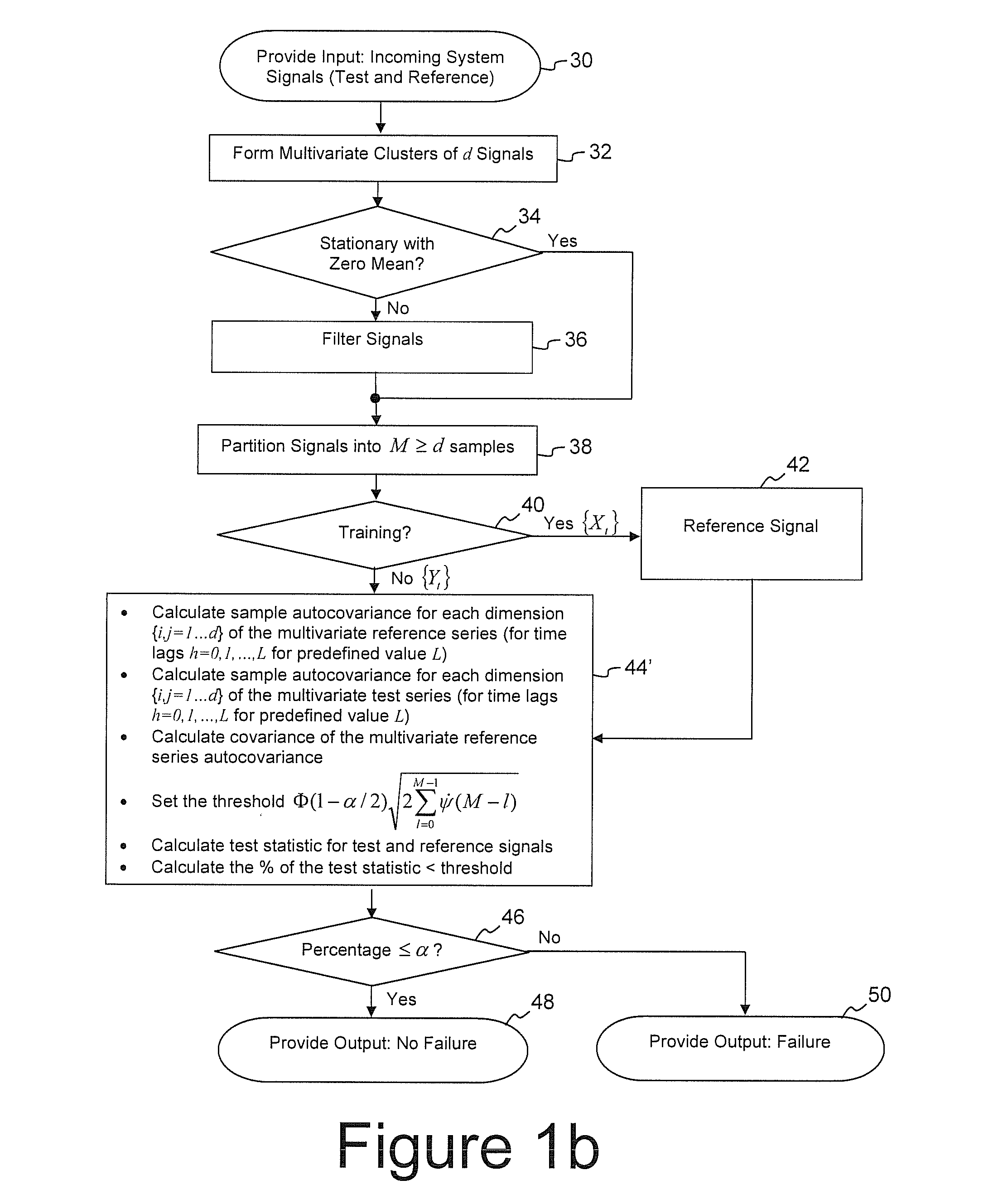System and method to assess signal similarity with applications to diagnostics and prognostics
a signal similarity and diagnostic technology, applied in the field of system and method to assess signal similarity with applications to diagnostics and prognostics, can solve the problems of compromising the robustness of such technology, the system and technology developed in these fields and others are often quite complex, and the traditional model often fails to accurately describe the system behavior
- Summary
- Abstract
- Description
- Claims
- Application Information
AI Technical Summary
Benefits of technology
Problems solved by technology
Method used
Image
Examples
example 1
[0057]The disclosed system diagnostics technology was applied to monitor the fuel flow rate signals for a Mercury® brand stationary gas turbine, such as manufactured and sold by Solar Turbines Incorporated, a company owned by Caterpillar, which is typically used to supply peak load shaving power to a facility during periods of high demand. Operation of this exemplary turbine has an average of six hours continuous rating per run, with a maximum rating of 4.5 MW. The Mercury 50 turbine is a stand-alone turbine which has an extensive array of sensors that may be monitored in real-time. A communication interface was established between the turbine controller and a data acquisition station.
[0058]Two experimental faults were introduced to the Mercury 50 turbine. A first fault was a partial blockage of the oil cooler air passage that mimics possible blockage caused by slug formation. The partial blockage began after approximately two hours of normal operation and continued for another seve...
example 2
[0060]The above time-domain processing techniques as most particularly described with reference to FIGS. 1b and 2b were used to study monthly weather patterns of two nearby cities, namely Athens and Atlanta, Ga., in the United States. Athens and Atlanta both lie in the Piedmont region of North Georgia, approximately seventy-five miles apart. Local folklore states that the two towns enjoy similar weather. Actual operational similarity of the weather patterns can be analyzed using the disclosed techniques, which were particularly applied to temperature and precipitation analysis for the two cities.
[0061]FIGS. 9a and 9b display monthly average temperatures for Athens and Atlanta, respectively. The temperatures are averaged over all days in each month for both stations during a time period inclusive of January 1950 until December 2003. There are N=648 observations for each series. FIGS. 10a and 10b respectively display the total monthly precipitation at the Athens and Atlanta stations o...
PUM
 Login to View More
Login to View More Abstract
Description
Claims
Application Information
 Login to View More
Login to View More - R&D
- Intellectual Property
- Life Sciences
- Materials
- Tech Scout
- Unparalleled Data Quality
- Higher Quality Content
- 60% Fewer Hallucinations
Browse by: Latest US Patents, China's latest patents, Technical Efficacy Thesaurus, Application Domain, Technology Topic, Popular Technical Reports.
© 2025 PatSnap. All rights reserved.Legal|Privacy policy|Modern Slavery Act Transparency Statement|Sitemap|About US| Contact US: help@patsnap.com



